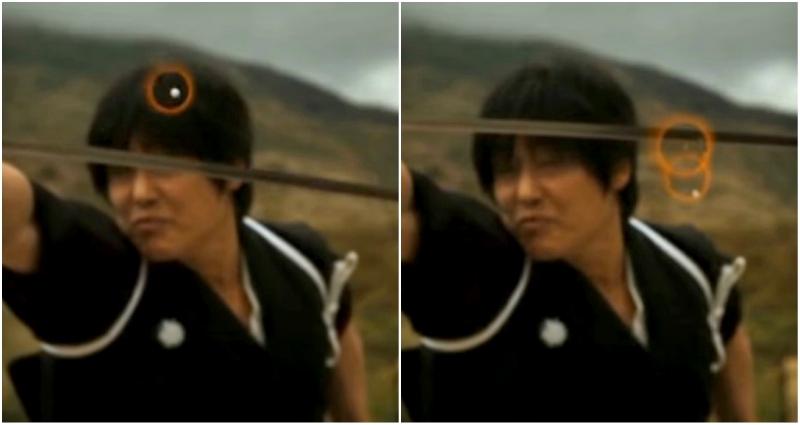I. Introduction
Can a sword really stop a bullet?
While it may seem unbelievable, there have been experiments and demonstrations that suggest it is possible for a sword to cut through a bullet. However, it is important to note that these experiments were performed under specific conditions and with the right equipment. Here are some key points to consider:
- A strong and sharp sword is necessary to withstand the impact of a bullet.
- When a sharp blade is plunged into a bullet with great velocity, it can cut the bullet in half.
- However, no human has been able to draw a sword on a speeding bullet and cut it in half.
While the concept is theoretically valid, in reality, bullets are extremely fast and deadly. The reaction time required to successfully deflect or cut a bullet with a sword is beyond what an average human can achieve.
Overall, while it may be possible for a sword to cut through a bullet under controlled circumstances, it is not a realistic or practical defense against bullets in real-world situations.
Stay tuned for the next section, where we will delve further into the science and factors involved in cutting a bullet with a sword!

II. The Science Behind It
The factors involved in cutting a bullet with a sword
Cutting a bullet with a sword involves several factors that contribute to its success. These factors include:
- The strength and sharpness of the sword’s blade
- The surface area of the sword’s edge in contact with the bullet
- The composition and velocity of the bullet
The pressure needed to cut through a bullet
To determine whether a sword can cut through a bullet, the cutting pressure is a crucial factor. The cutting pressure is calculated by dividing the kinetic energy of the bullet by the area of the sword’s edge in contact with the bullet.
The cutting pressure needed to sever a bullet is estimated to be around 3 gigapascals or 3 billion newtons per square meter. This is significantly higher than the yield strength of common bullet materials like lead or copper.
Theoretical possibilities and limitations
While the concept of cutting a bullet with a sword is theoretically possible, practical limitations exist. Factors such as the sharpness of the sword’s edge, the smoothness of the bullet’s surface, and the friction between the two surfaces can affect the outcome.
Although experiments have shown that a stationary katana can cut through a bullet, no human has attempted to cut a speeding bullet in half with a sword.
The truth remains that bullets are extremely fast and deadly, making it highly unlikely for humans to react in time to deflect or cut through them effectively.
For more information on this topic, you can visit this Wikipedia page.
III. Real-Life Experiments
Examples of successful attempts to cut bullets
While it may seem like something out of a movie, there have been instances where individuals have successfully cut bullets with a sword. One notable swordsman, Isao Machii, managed to cut a bb pellet in half with his sword. Although it’s important to note that a bb pellet is not a bullet, it does demonstrate the skill and precision required to achieve such a feat.
The challenges and limitations of cutting bullets
However, it’s vital to recognize the challenges and limitations associated with cutting bullets. Bullets are specifically designed to penetrate and stop upon impact. When a bullet is cut, it will continue on its path until it hits something and may even ricochet off surfaces like a rock. Additionally, the speed and lethal nature of bullets make it extremely difficult for a person to react quickly enough to cut them. While it may be possible under certain conditions, it remains a highly dangerous and improbable feat in real-life scenarios.
For more information on the subject, you can visit the Gunshot Wound Wikipedia page.
In conclusion, while it is theoretically possible for a sword to cut a bullet, the challenges, and limitations involved make it highly unlikely and dangerous in real-life situations. It’s important to differentiate between cinematic portrayals and the reality of such feats.
IV. Human Reaction Time and Feasibility
The importance of reaction time in stopping a bullet
To stop a bullet with a sword, an individual would need to possess an incredibly fast reaction time. The ability to anticipate and react to a speeding bullet is crucial in such a scenario. However, achieving this level of reaction time is extremely challenging for the average human.
The speed of human perception and muscle response
When a threat is detected, the brain sends a signal to the spinal cord, which triggers a series of muscle movements. While the electrical signals in neurons travel at the speed of light, there is still a significant delay between perceiving a threat and physically responding to it. It takes approximately 150-220 milliseconds for the signal to be transmitted from the neuron to the muscle and initiate the necessary movement.
Considering the limited time window and the speed at which bullets travel, it is unlikely that humans can consistently and reliably stop a bullet with a sword. While there have been experiments where stationary swords have cut through bullets, attempting to draw a sword on a speeding bullet is a far more challenging feat.
Ultimately, the concept of stopping a bullet with a sword falls within the realm of fiction and is not typically achievable in reality.

